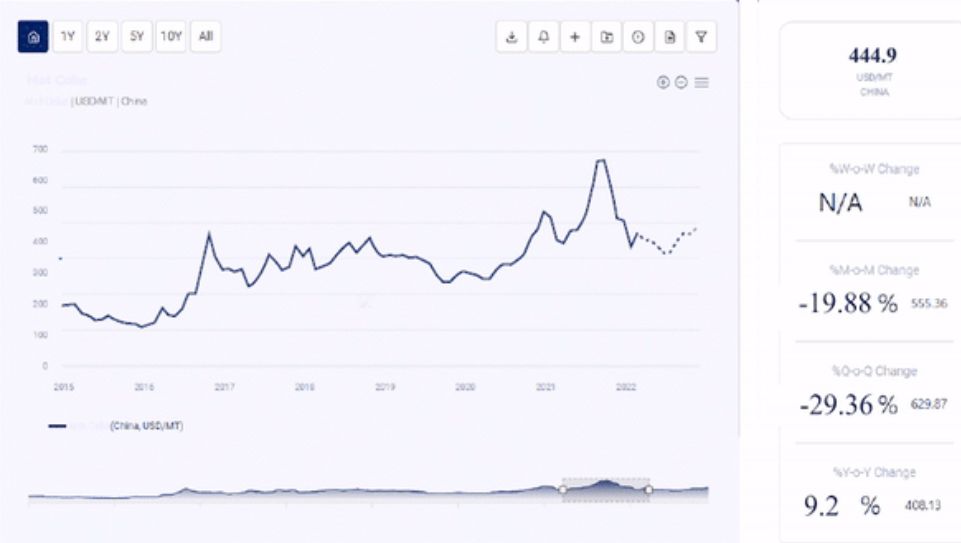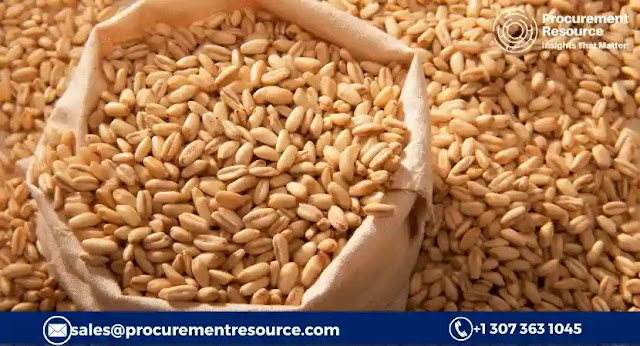Butadiene Rubber (BR) is produced via anionic or coordination polymerization of the monomer 1,3 butadiene in a non-polar. It is one of the most reasonably priced synthetic rubbers and general-purpose elastomers. It is frequently substituted for natural rubber.
Request for Real Time BR (Butadiene Rubber) Prices: https://www.procurementresource.com/resource-center/br-butadiene-rubber-price-trends/pricerequest
It comes in three varieties: high-cis, medium-cis, and low-cis, with medium-cis being the most popular. Due to its excellent resistance to wear and abrasion, BR is commonly used in the production of tyres.
The leading exporters in the market of Butadiene Rubber are the United States, Russia, South Korea, Japan, and Germany.
Key Details About the BR (Butadiene Rubber) Price Trend:
Procurement Resource does an in-depth analysis of the price trend to bring forth the monthly, quarterly, half-yearly, and yearly information on the BR (Butadiene Rubber) price in its latest pricing dashboard. The detailed assessment deeply explores the facts about the product, price change over the weeks, months, and years, key players, industrial uses, and drivers propelling the market and price trends.
Each price record is linked to an easy-to-use graphing device dated back to 2014, which offers a series of functionalities; customization of price currencies and units and downloading of price information as excel files that can be used offline.
The BR (Butadiene Rubber) price trend, pricing database, and analysis can prove valuable for procurement managers, directors, and decision-makers to build up their strongly backed-up strategic insights to attain progress and profitability in the business.
Industrial Uses Impacting BR (Butadiene Rubber) Price Trend:
 Shoe soles, tyres, and other parts are typically made from butadiene rubber. However, its main usage is in the automobile industry, adhesives, sealants, asphalt, and polymer modification.
Shoe soles, tyres, and other parts are typically made from butadiene rubber. However, its main usage is in the automobile industry, adhesives, sealants, asphalt, and polymer modification.
It also acts as a crucial element for nylon and ABS resins, cellphones, electrical device shells, and car tyres.
Cold emulsion butadiene rubber is employed in lighter-duty tyres. In addition, it is also utilised in wire insulation, cabling, hoses, seals, gaskets, roll covers, haul-off pads, and belting.
Key Market Players:
- The Goodyear Tire & Rubber Company
- Cray Valley USA, LLC
- Trinseo S.A.
- Lanxess AG
- Rahaoil, Inc.
News and Events:
- January 03, 2023: The butadiene (FD Hamburg) transactions settled at USD 575 per tonne for the week ending on December 30 for the third consecutive week. Nitrile rubber, meanwhile, ended the week with a 6.0% week-over-week rise and a final price of USD 3,941/tonne (CFR, ramburg), reversing a declining trend that started in December. Styrene butadiene rubber prices (FD Wuppertal) decreased 6% week over week as the market continued to be impacted by weak demand.
About Us:
Procurement Resource offers in-depth research on product pricing and market insights for more than 500 chemicals, commodities, and utilities updated daily, weekly, monthly, and annually. It is a cost-effective, one-stop solution for all your market research requirements, irrespective of which part of the value chain you represent.
We have a team of highly experienced analysts who perform comprehensive research to deliver our clients the newest and most up-to-date market reports, cost models, price analysis, benchmarking, and category insights, which help in streamlining the procurement process for our clientele. Our team track the prices and production costs of a wide variety of goods and commodities, hence, providing you with the latest and consistent data.
To get real-time facts and insights to help our customers, we work with a varied range of procurement teams across industries. At Procurement Resource, we support our clients, with up-to-date and pioneering practices in the industry, to understand procurement methods, supply chain, and industry trends, so that they can build strategies to achieve maximum growth.
Contact Us:
Company Name: Procurement Resource
Contact Person: Jolie Alexa
Email: sales@procurementresource.com
Toll Free Number: USA & Canada – Phone no: +1 307 363 1045 | UK – Phone no: +44 7537 132103 | Asia-Pacific (APAC) – Phone no: +91 1203185500
Address: 30 North Gould Street, Sheridan, WY 82801, USA







 Bleaching earth is a clay substance that is primarily used as an industrial refining material which is used in the purification process of several oil varieties. The clay is an excellent absorber and purifier. It has great bleaching and refining abilities that are used widely at oil refineries. It removes the impurities and cleans the mixture to obtain the product. Impurities may constitute color, proteins, soaps, and unwanted materials in the oil content. The clay is a form of bio-oil used as feedstock. It is also used to produce biofuels, enhancing biodegradable, non-toxic, environmentally friendly commercial alternatives.
Bleaching earth is a clay substance that is primarily used as an industrial refining material which is used in the purification process of several oil varieties. The clay is an excellent absorber and purifier. It has great bleaching and refining abilities that are used widely at oil refineries. It removes the impurities and cleans the mixture to obtain the product. Impurities may constitute color, proteins, soaps, and unwanted materials in the oil content. The clay is a form of bio-oil used as feedstock. It is also used to produce biofuels, enhancing biodegradable, non-toxic, environmentally friendly commercial alternatives.



